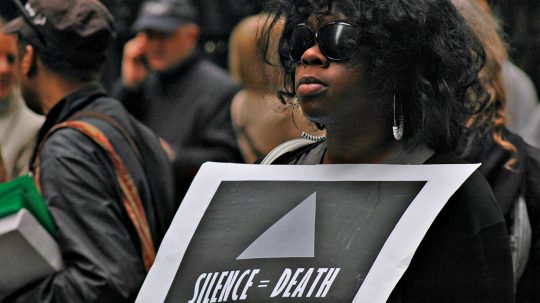In July 2017, a man known only as K attended a football match between Scottish team Celtic and Northern Irish team Linfield, wearing an IRA supporting t-shirt. He was arrested and charged for behaviour ‘likely to incite public disorder’ – but did the arrest breach his human rights?
Behaviour ‘likely to incite public disorder’ is prohibited by the Offensive Behaviour at Football and Threatening Communications (Scotland) Act 2012.
But K challenged this, arguing that the law was incompatible with his right to fair punishment and right to freedom of expression, protected by Articles 7 and 10 of the Human Rights Convention respectively.
Last month he lost his challenge when a judge at the Glasgow Sheriff Court ruled that there had been no breach of his rights.
‘Offensive Behaviour’
 Image Credit: 27707 / Pixabay
Image Credit: 27707 / Pixabay
We’ve already written about politics in football and the rules which govern what footballers and supporters are allowed to wear at matches.
But K also fell foul of a specific law in Scotland, the Offensive Behaviour at Football and Threatening Communications (Scotland) Act 2012. This prohibits behaviour at football matches which is likely to incite public disorder, where that behaviour expresses, or stirs up, hatred of a group of people based on their religion.
It was introduced in response to a specific problem: sectarian abuse and violence at Scottish football matches, particularly in Glasgow.
Glasgow is a city with a long history of religious and political rivalry between Protestants and Roman Catholics. Today, that rivalry tends to be expressed most visibly at football matches between two teams known collectively as the Old Firm: Celtic, a club founded by Irish Catholic immigrants to Scotland, and Rangers, whose supporters are traditionally Protestant.
Symbols, images, flags and chants used by both teams are often religiously and politically loaded, and have resulted in violence between fans.
No Punishment Without Law
 Image Credit: Thomas Serer / Unsplash
Image Credit: Thomas Serer / Unsplash
Article 7 of the Human Rights Convention states that laws must be sufficiently clear to enable people to know whether or not they are breaking the law.
K argued that the Offensive Behaviour at Football Act was too general, and not detailed or precise enough for him to know whether his behaviour was criminal or not. He argued that the circumstances in which a person might be offended were so variable that “the point at which behaviour became criminal was incapable of objective determination.”
[I]t ought to be reasonably foreseeable to a person of ordinary intelligence that the wearing of apparel…relating to and in support of…the IRA at a Scottish football match is likely to be regarded as offensive.
Sheriff Reid
However, the judge in the case, Sheriff Reid, disagreed, and held that the law was clear enough to allow K to have known what acts would be considered criminal. He stated that there was a common and well-established general meaning of “offensive” and that this, combined with previous statements of law on this issue, meant K should have known he was breaking the law.
The judge said: “It is not a significant leap in logic to conclude that, with the benefit of appropriate legal advice, it ought to be reasonably foreseeable to a person of ordinary intelligence that the wearing of apparel […] relating to and in support of a proscribed terrorist organisation such as the IRA at a Scottish football match is likely to be regarded as offensive and is therefore likely to be a criminal act.”
K also argued that the law violated his right to freedom of expression under Article 10 of the Human Rights Convention.
However, the Article 10 right is not absolute: interference can be justified if necessary to protect public safety or to prevent crime and disorder. In this case, the judge decided that the Scottish Government had been well within its rights to restrict K’s freedom of expression in pursuit of “nobler, legitimate aims” – to address the “intolerable level of escalating sectarian-related violence and misconduct” for the benefit of Scottish society.
‘Simplistic and Badly Written’ Law

James Kelly, MSP, said the law was badly written. Image Credit: Wikimedia
The law was introduced in 2012 by the Scottish National Party with the laudable intention of tackling sectarianism and religious hatred but it has not been without controversy.
Opponents of the law agreed that sectarianism was a problem in Scottish society that needed to be tackled, but argued that new legislation was not the answer. Many argued that it unfairly targeted football fans, and noted that the police and courts already had powers to tackle offensive and abusive behaviour.
Two weeks after judgment was handed down in this case, the Act was in fact repealed after a sustained campaign by football fans and politicians. James Kelly, the Member of Scottish Parliament who introduced the repeal bill called the original act “simplistic and badly written” and argued that it had done nothing meaningful to tackle sectarian-related violence and abuse.
The Scottish government drew attention to recent investment and funding in anti-sectarian projects and noted that an independent review of hate crime in Scotland was underway.







